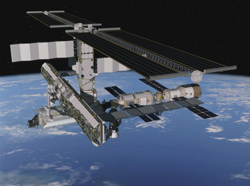Robust and durable networks for space data
Spacecraft need an on-board communication network with many demanding requirements. The technology has to support both avionics and payload data-handling applications. In order to fulfil this need, the EU-funded 'Spacewire RT' (SPWRT)(opens in new window) project was established. Based on Spacewire, the existing standard for high-speed data links and networks for use onboard spacecraft, the project conceived and created a new communications network technology. A highly experienced team of European and Russian academic and industrial organisations worked on the SPWRT project. Initially, the researchers produced a set of user requirements and case studies for networking onboard spacecraft. In addition, the scientists decided to base their network research on SpaceFibre technology. This high-performance network technology is currently being designed by the University of Dundee in Scotland on behalf of the European Space Agency (ESA). Enhancing this high-speed serial data link, the project designed a technology capable of ensuring high-quality performance for critical applications. The SPWRT team researched quality of service and automatic fault detection, isolation and recovery capabilities. By creating and developing this new technology, SPWRT has substantially strengthened the collaborative bonds between the European and Russian organisations involved. The technology is expected to be adopted widely with implementations by European, Japanese and Russian organisations already under way. The enhanced SpaceFibre technology resulting from the now completed SPWRT project is designed primarily for spacecraft applications. However, its key characteristics of high performance and implementation simplicity are likely to make it attractive for terrestrial applications such as robotic applications too.







